We're continuing our series of articles, "Central Saint Martins Student Revelations," engaging with this year's most talented graduates and uncovering all the fascinating details directly from the students themselves.
In our first article, we featured Antonio Femia and his collection inspired by the flora and fauna of Belgium. Now, we're turning our attention to Lucas Louis Lidy, whose collection, "SATOR," has also garnered significant attention.
But, let's begin with a bit of backstory about how Lucas started his journey and why he decided to dedicate his life to fashion.
He has always been drawn to creative expression. When Lucas was a child, his mother made every effort to keep him away from phone and television screens, etc. She always engaged him in something productive: drawing, painting, or crafting.
"On weekends, we were always involved in some kind of artistic activity. In school, I consistently chose art and design electives, which eventually led me to pursue a specialized art and design program at the lycée in Vence, France. It was during one of our school projects there that I discovered fashion, and in one moment, something just clicked inside me and evolved into a deep passion for fashion, which ultimately inspired me to apply to Central Saint Martins," Lucas shares.
In our first article, we featured Antonio Femia and his collection inspired by the flora and fauna of Belgium. Now, we're turning our attention to Lucas Louis Lidy, whose collection, "SATOR," has also garnered significant attention.
But, let's begin with a bit of backstory about how Lucas started his journey and why he decided to dedicate his life to fashion.
He has always been drawn to creative expression. When Lucas was a child, his mother made every effort to keep him away from phone and television screens, etc. She always engaged him in something productive: drawing, painting, or crafting.
"On weekends, we were always involved in some kind of artistic activity. In school, I consistently chose art and design electives, which eventually led me to pursue a specialized art and design program at the lycée in Vence, France. It was during one of our school projects there that I discovered fashion, and in one moment, something just clicked inside me and evolved into a deep passion for fashion, which ultimately inspired me to apply to Central Saint Martins," Lucas shares.

Photos: Eliot Standaert & Rebecca Maynes
Lucas's collection is called "SATOR," which translates from Latin to "sower" or "planter." Looking at the collection, one can indeed discern a certain image of a "sower." In some of the outfits, as you may have already noticed in the photos, the student used ears of wheat, which are a reference to rural aesthetics. But, let's hear all the details from Lucas himself.
The look: "Souvenir de moisson"
"This look is a quiet tribute to the harvest season and its emotional and symbolic significance."
The look: "Souvenir de moisson"
"This look is a quiet tribute to the harvest season and its emotional and symbolic significance."
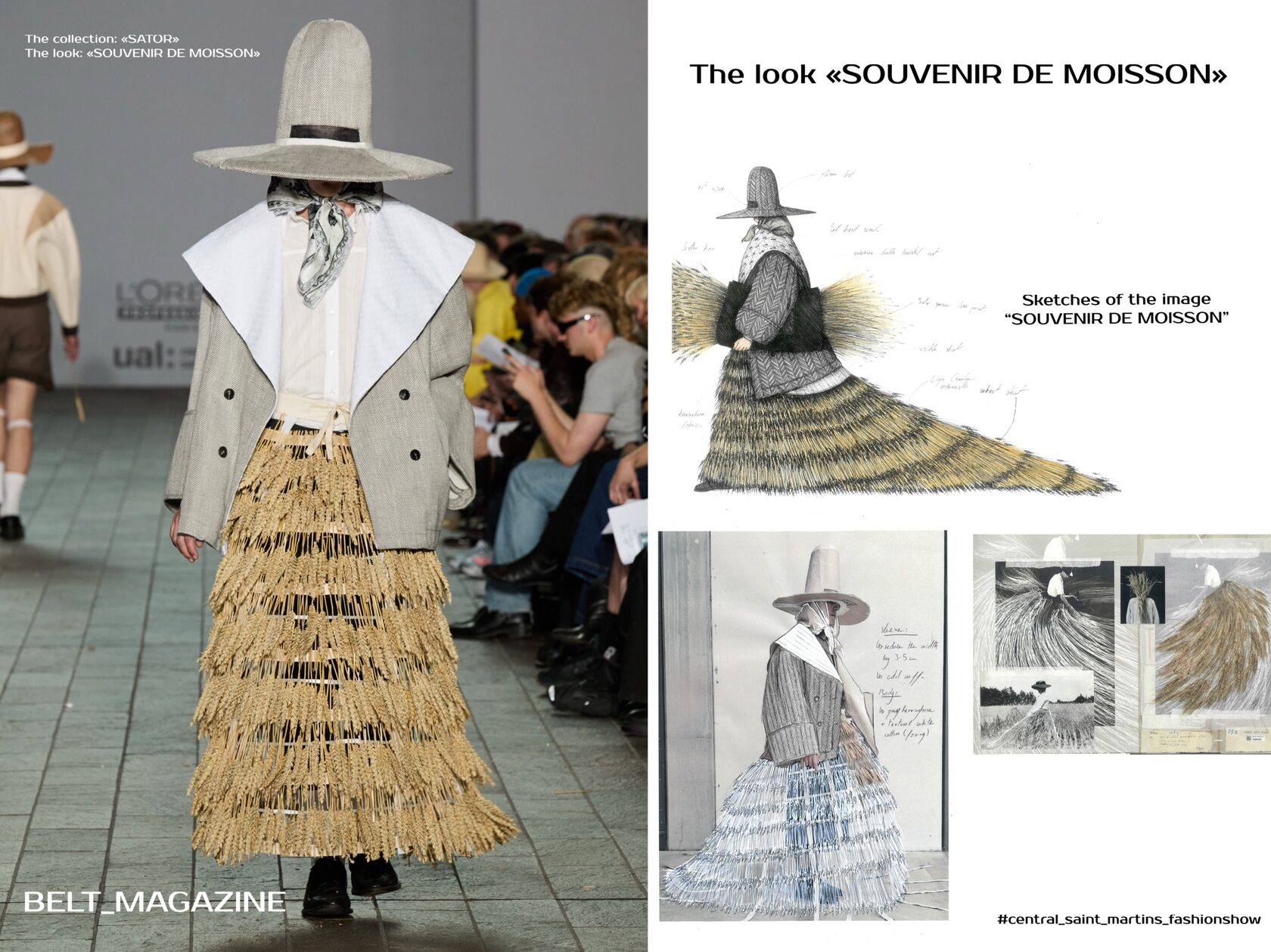
Photo: Rebecca Maynes
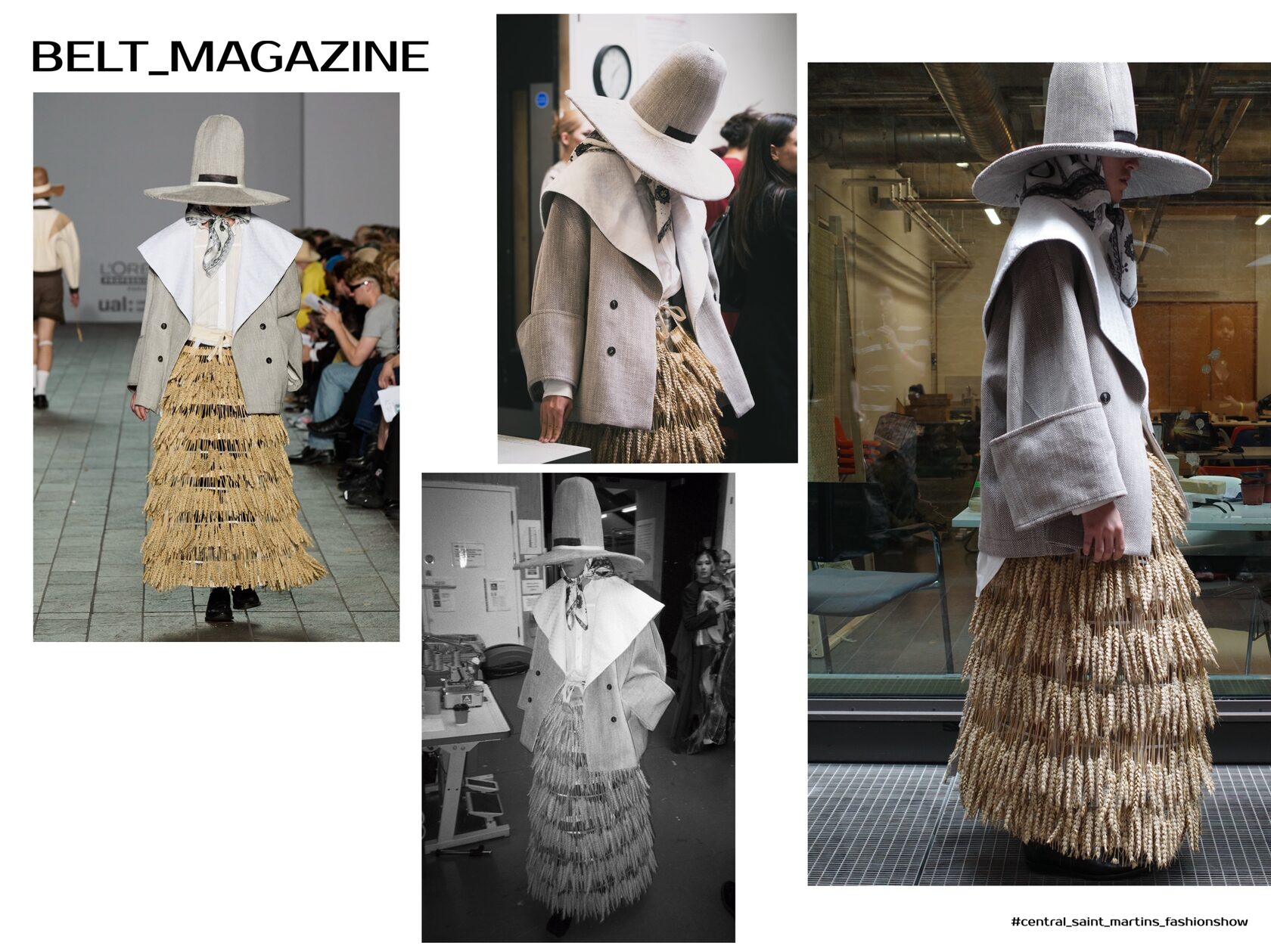
Photos: Eliot Standaert & Rebecca Maynes
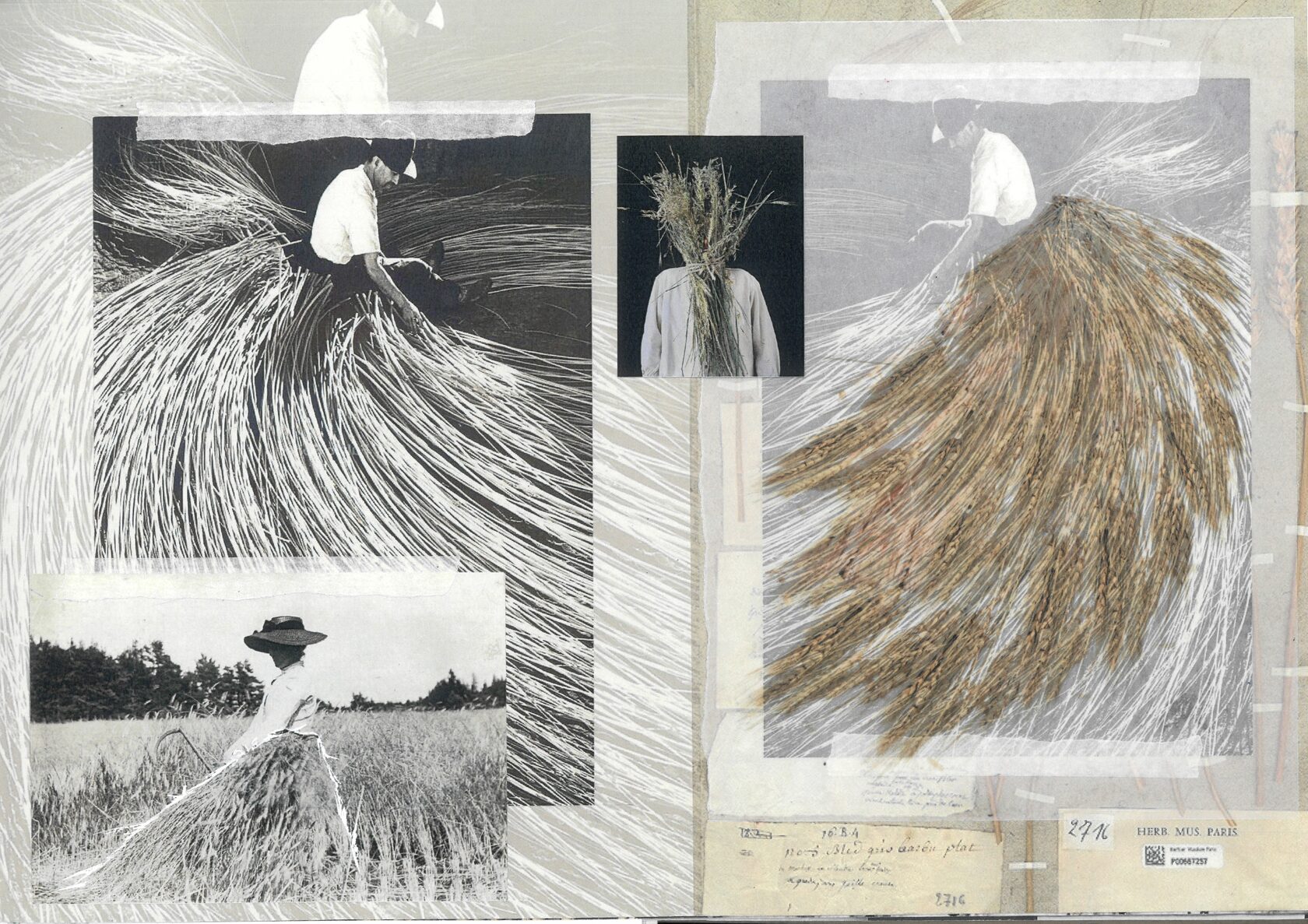
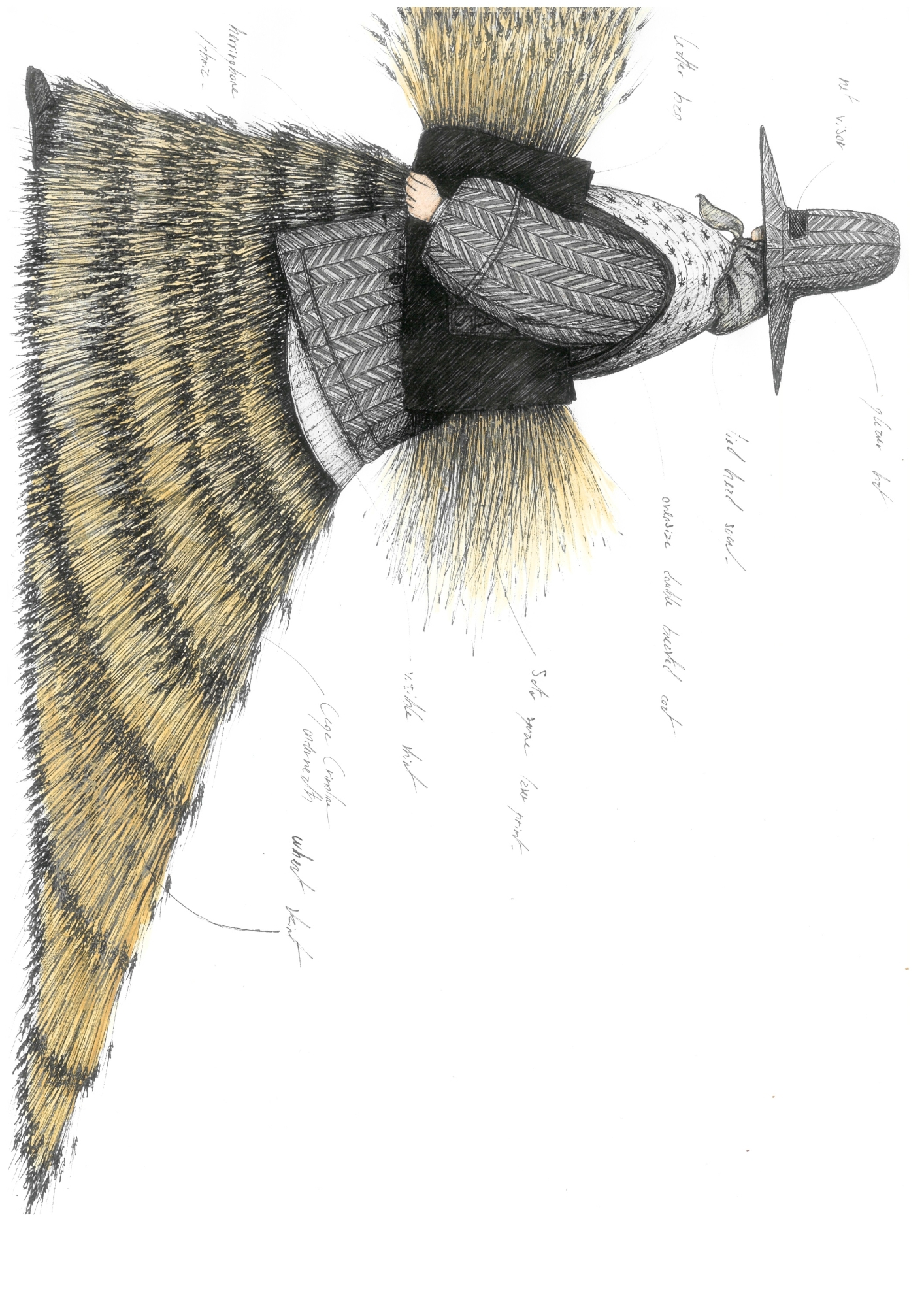
"It's inspired by the traditional dress of women in Provence. I was struck by the volume of their dresses, which inspired the creation of the dramatic silhouette of the wheat skirt. One of the key elements of their attire is the fichu—a triangular scarf tied around the shoulders and descending to a point down the back. I reinterpreted this detail through an oversized coat with a wide, open collar that wraps around the shoulders and tapers to a point at the end."
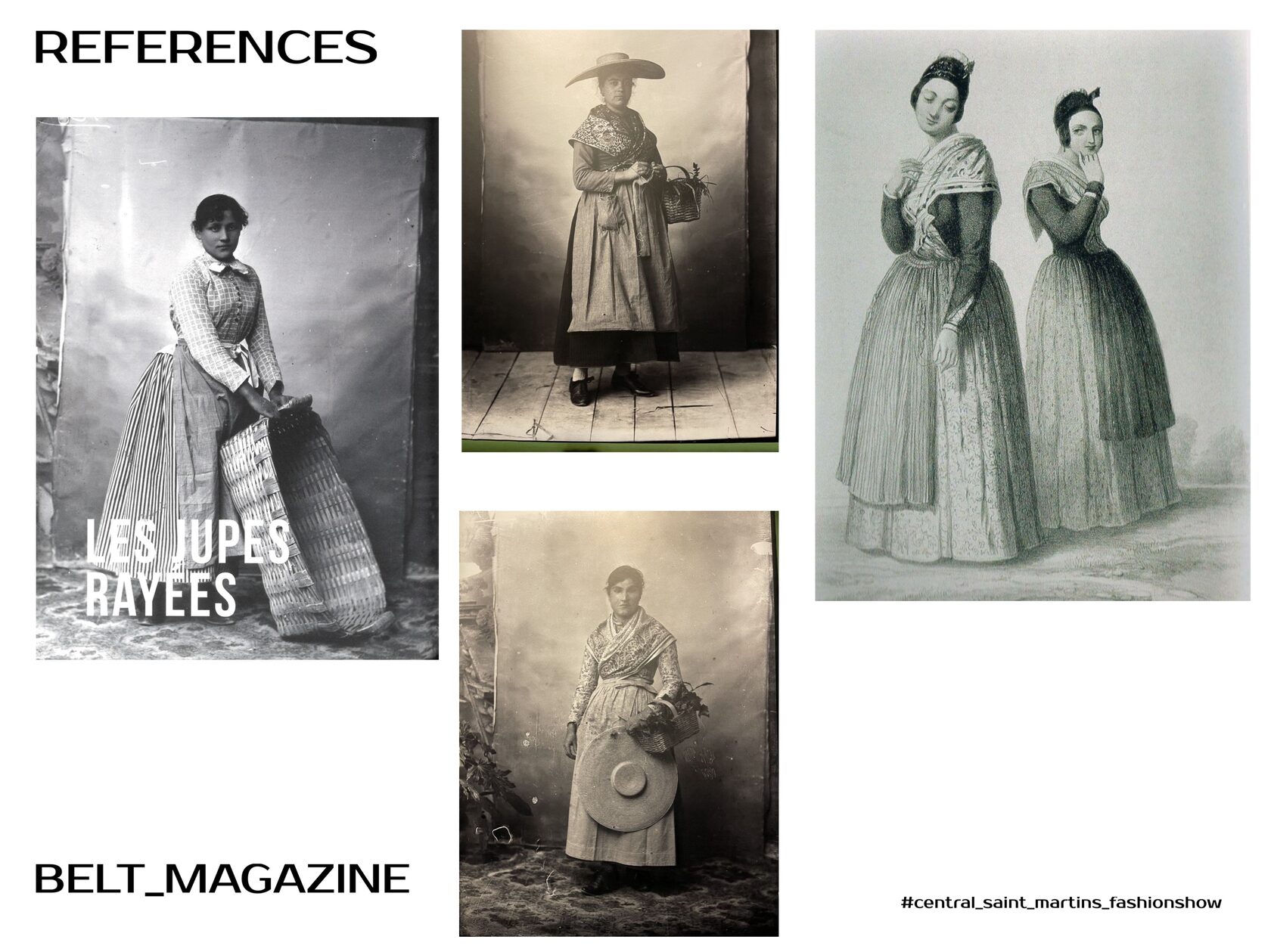
"The main body of the coat is made of herringbone-patterned cotton in a beige-gray color—a pattern deeply rooted in French artisanal traditions. Its shades evoke the limestone of the southern landscapes and the straw tones of wheat fields. The collar is made of embroidered white cotton with geometric motifs, referencing Provençal textile heritage."

"Underneath the coat is a white cotton shirt that adds a touch of 'festive attire.' This is a reference to the more refined clothing worn to church or celebrations, as opposed to everyday workwear. The fabric I used for the shirt is a textured Japanese organic cotton with subtle stripes, reminiscent of patterns often found in Provençal culture."
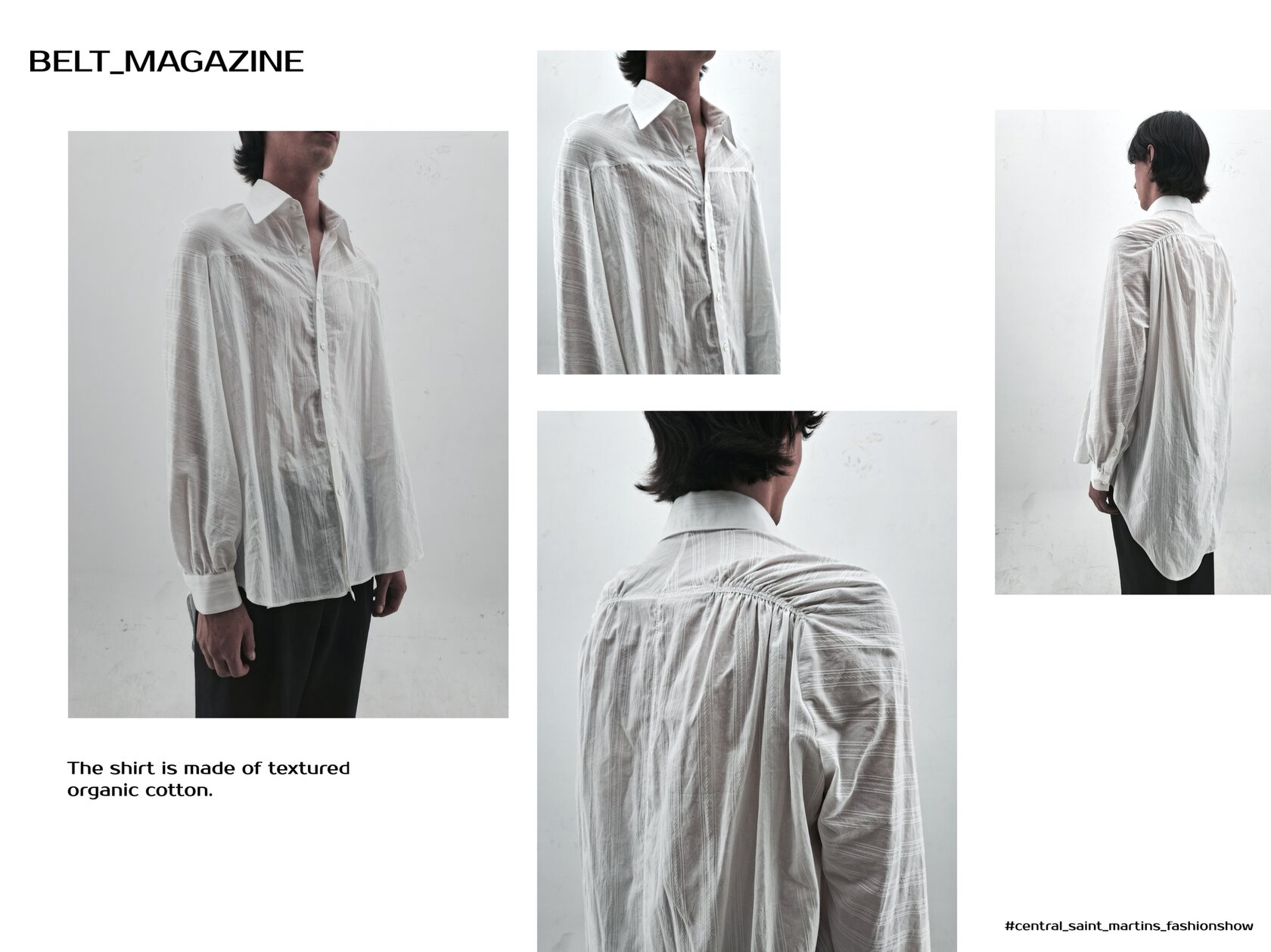
"The hat draws inspiration from various traditional head coverings worn by women in the South of France. Beyond protecting from the heat and insects, it carries a symbolic meaning—a way to conceal one's identity. This is connected to my own past, as I grew up in a conservative environment and often had to hide my identity."

"Combined with a large silk scarf on the head, the hat becomes a central element of the look. The scarf is adorned with a hand-drawn illustration. It was then digitized, but despite that, I intentionally preserved the raw, engraved texture of my drawings. At the center is the Sator Square, which gave the collection its name, surrounded by frescoes and motifs in the Provençal style."
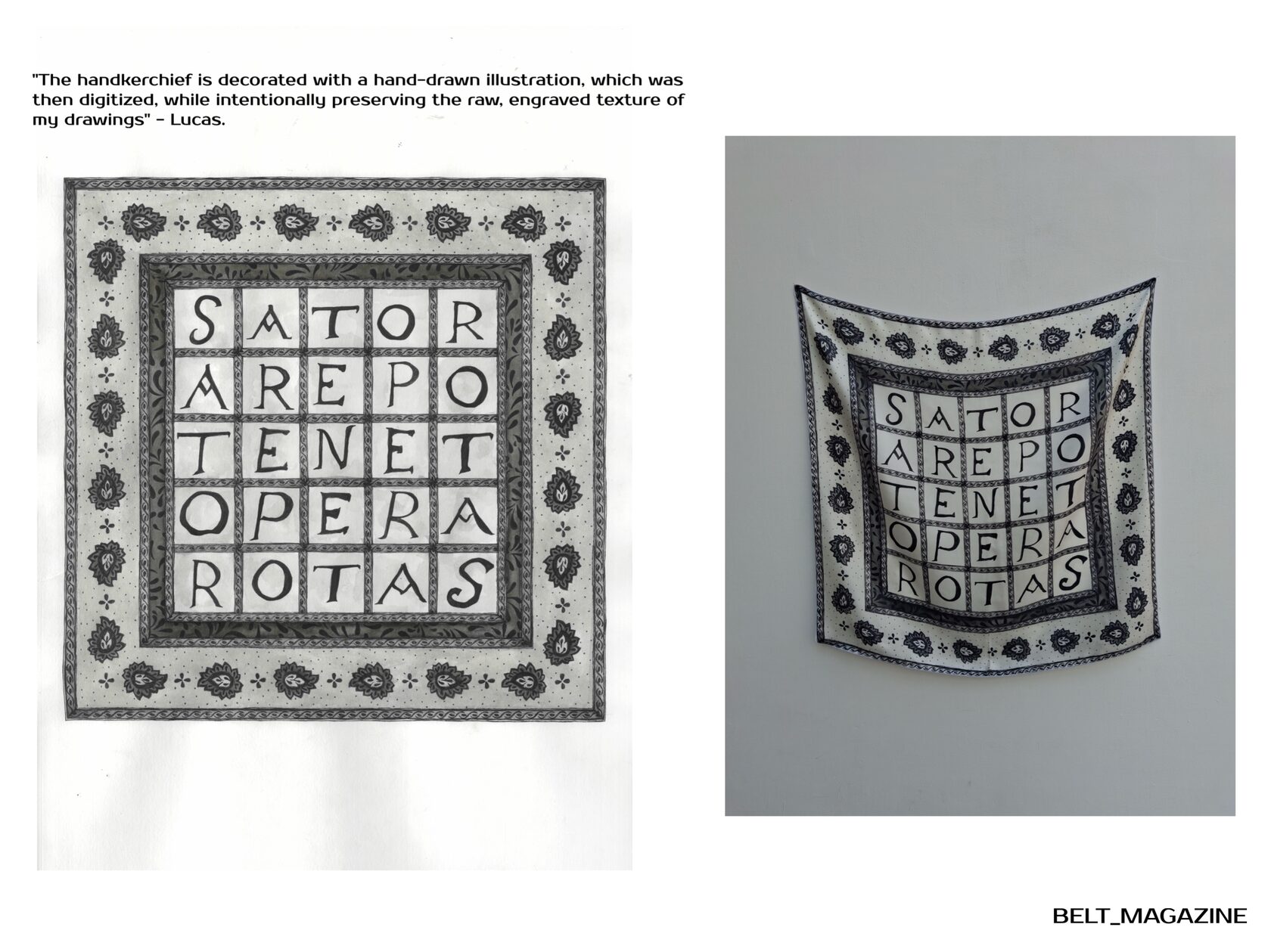
"The overall silhouette is androgynous, challenging traditional notions of gendered clothing. By recomposing familiar elements of the costume, the look questions the binary codes of men's and women's apparel."
Listening to Lucas's stories about creating the look, our BELT team had only one question: "How difficult was it for Lucas to create this look?"
He, of course, readily shared his insights with us.
"The skirt was probably the most labor-intensive piece. The internal structure was made by hand using 30 meters of knitted cotton tape and 30 meters of boning (the framework). Once I formed the base, I began attaching hundreds of ears of wheat, one at a time."
Listening to Lucas's stories about creating the look, our BELT team had only one question: "How difficult was it for Lucas to create this look?"
He, of course, readily shared his insights with us.
"The skirt was probably the most labor-intensive piece. The internal structure was made by hand using 30 meters of knitted cotton tape and 30 meters of boning (the framework). Once I formed the base, I began attaching hundreds of ears of wheat, one at a time."
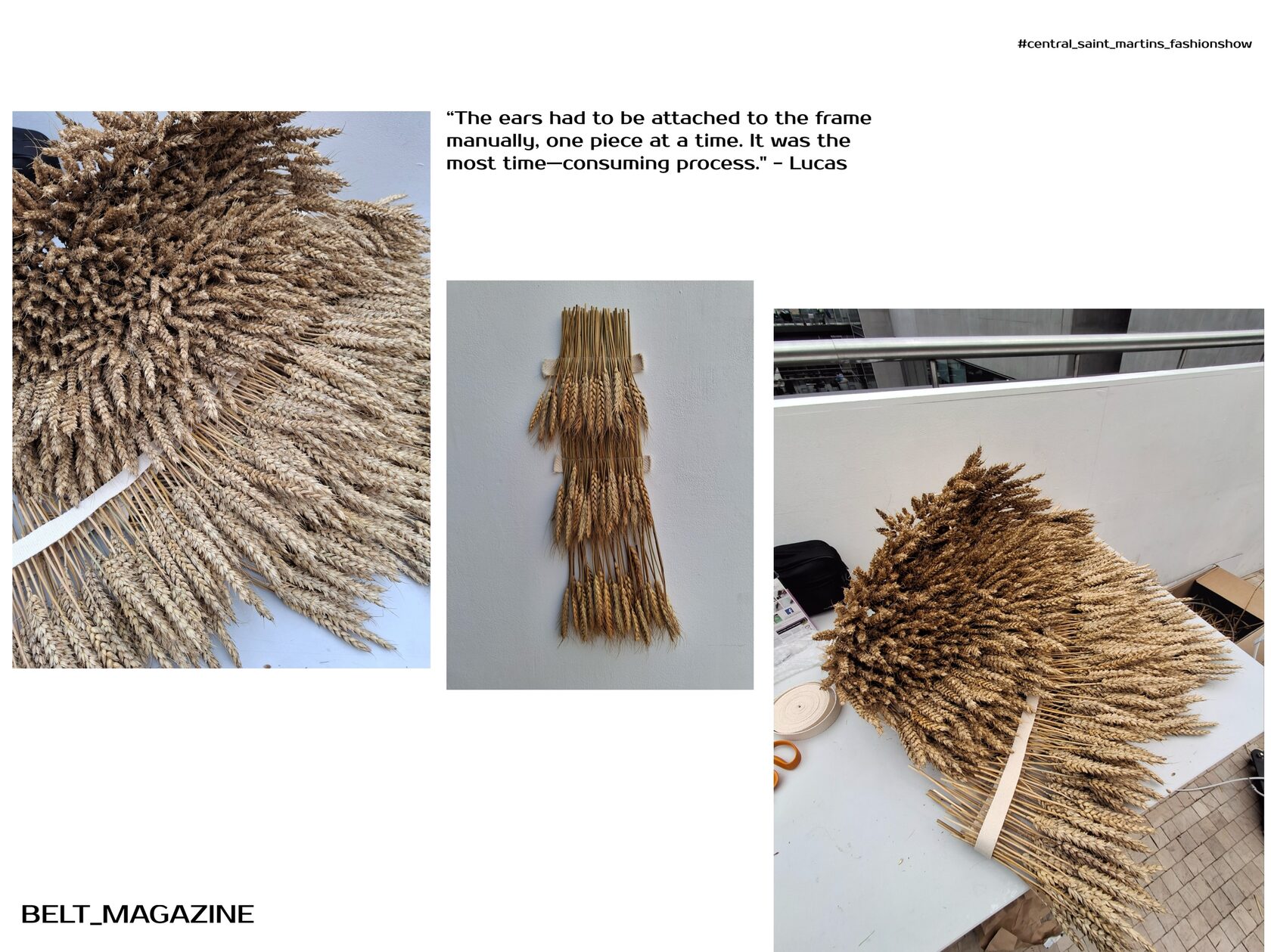
"The design of the silk scarf took me two full days. I drew it using fine liners (0.03/0.05) and watercolor, maintaining the raw, engraved aesthetic characteristic of my drawing style.
The prototype of the shirt was developed at the beginning of the school year, and it took me about a week to refine it. It is made from a single pattern piece, which required a lot of draping and pattern-making work—the most time-consuming stages of the process.
The coat turned out to be surprisingly simple to make, although perfecting its oversized silhouette, and especially the collar, required careful refinement and time. But this was necessary to create volume without losing clarity and structure.
The hat (as well as four others in this collection) was created in collaboration with the incredibly talented milliner, Virna Pasquinelli," Lucas shared.
Sophisticated Field Sport Look
"This is the most sporty look in the collection, featuring a reworked bomber jacket, athletic-style shorts, and a straw hat, all presented through the lens of elegance and rural utility."
The prototype of the shirt was developed at the beginning of the school year, and it took me about a week to refine it. It is made from a single pattern piece, which required a lot of draping and pattern-making work—the most time-consuming stages of the process.
The coat turned out to be surprisingly simple to make, although perfecting its oversized silhouette, and especially the collar, required careful refinement and time. But this was necessary to create volume without losing clarity and structure.
The hat (as well as four others in this collection) was created in collaboration with the incredibly talented milliner, Virna Pasquinelli," Lucas shared.
Sophisticated Field Sport Look
"This is the most sporty look in the collection, featuring a reworked bomber jacket, athletic-style shorts, and a straw hat, all presented through the lens of elegance and rural utility."

Photo: Rebecca Maynes
"The color palette is inspired by the earth and its natural tones. The dark brown cotton moleskin shorts are a reflection of plowed soil, evoking associations with the rich texture of livestock hides. The ribbed details allude to the furrows left by plows in the fields, and in turn, are a subtle nod to the aesthetics of agriculture. The beige color of the bomber jacket refers to the natural shades of raw fibers, such as cotton, linen, and hemp. The shoulder inserts are made of jute yarn, adding a subtle sheen. The ribbing on the jacket echoes the ribbing on the shorts, visually connecting the two pieces together."
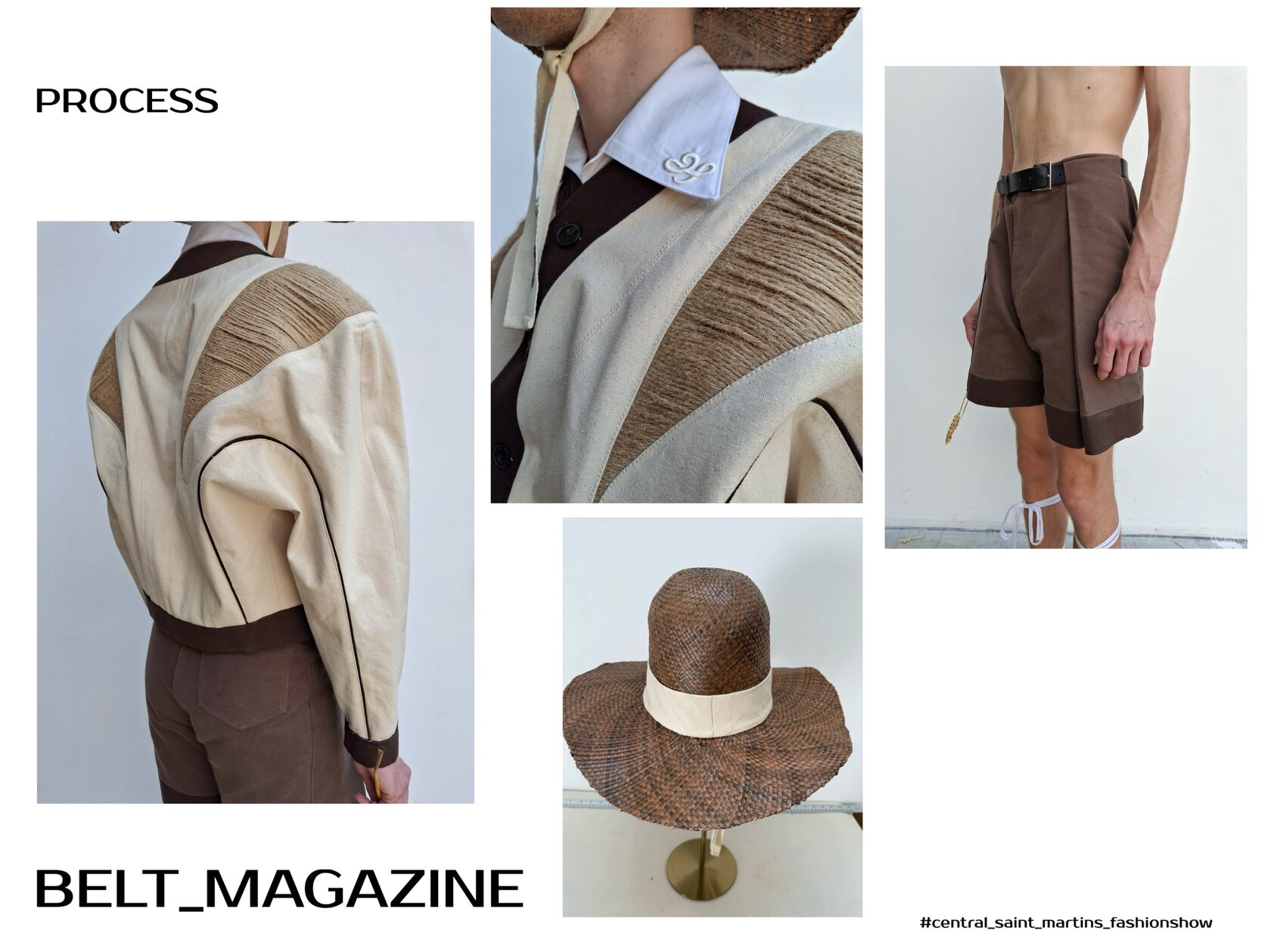
Throughout the collection, Lucas used contrasting neutral tones to create a rhythm in each silhouette, thereby giving the looks a soft vibrancy that remains quiet and yet draws attention. The color palette is inspired by the sun-drenched landscapes of the South of France, which the designer admired during long walks in nature.
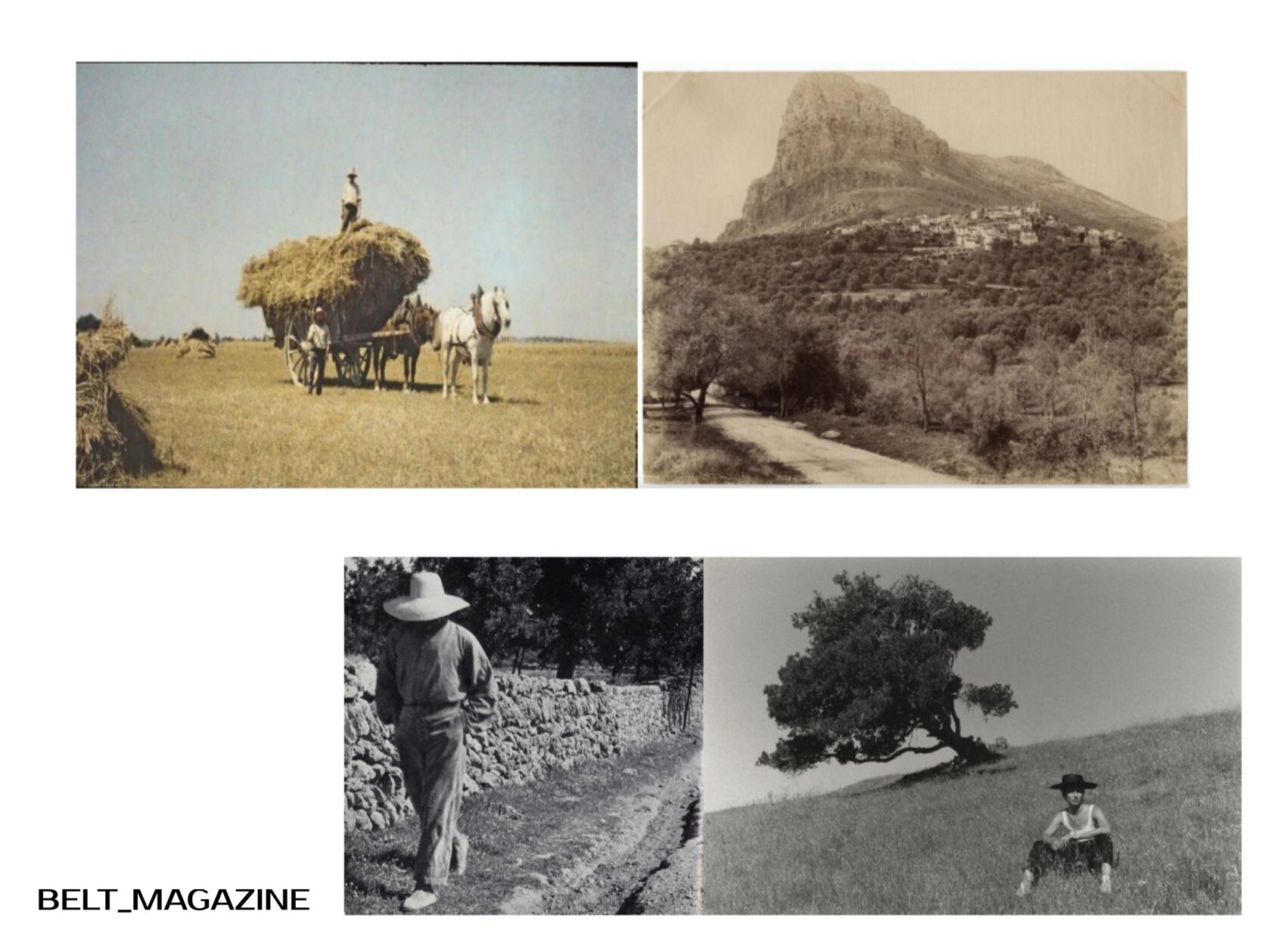
In this way, Lucas wanted to emphasize that the countryside and agricultural labor can also be associated with art, refinement, and sophisticated taste.
"Each detail serves to elevate the rustic aesthetic to something elegant and contemporary. By using raw or textured materials, such as jute yarn, moleskin, and canvas (used for the bomber's body), I aimed to prove that natural materials can belong in fashion. They deserve much more recognition and use than the synthetic alternatives that harm our Earth, which gives us these beautiful and noble resources," Lucas explains.
"Each detail serves to elevate the rustic aesthetic to something elegant and contemporary. By using raw or textured materials, such as jute yarn, moleskin, and canvas (used for the bomber's body), I aimed to prove that natural materials can belong in fashion. They deserve much more recognition and use than the synthetic alternatives that harm our Earth, which gives us these beautiful and noble resources," Lucas explains.
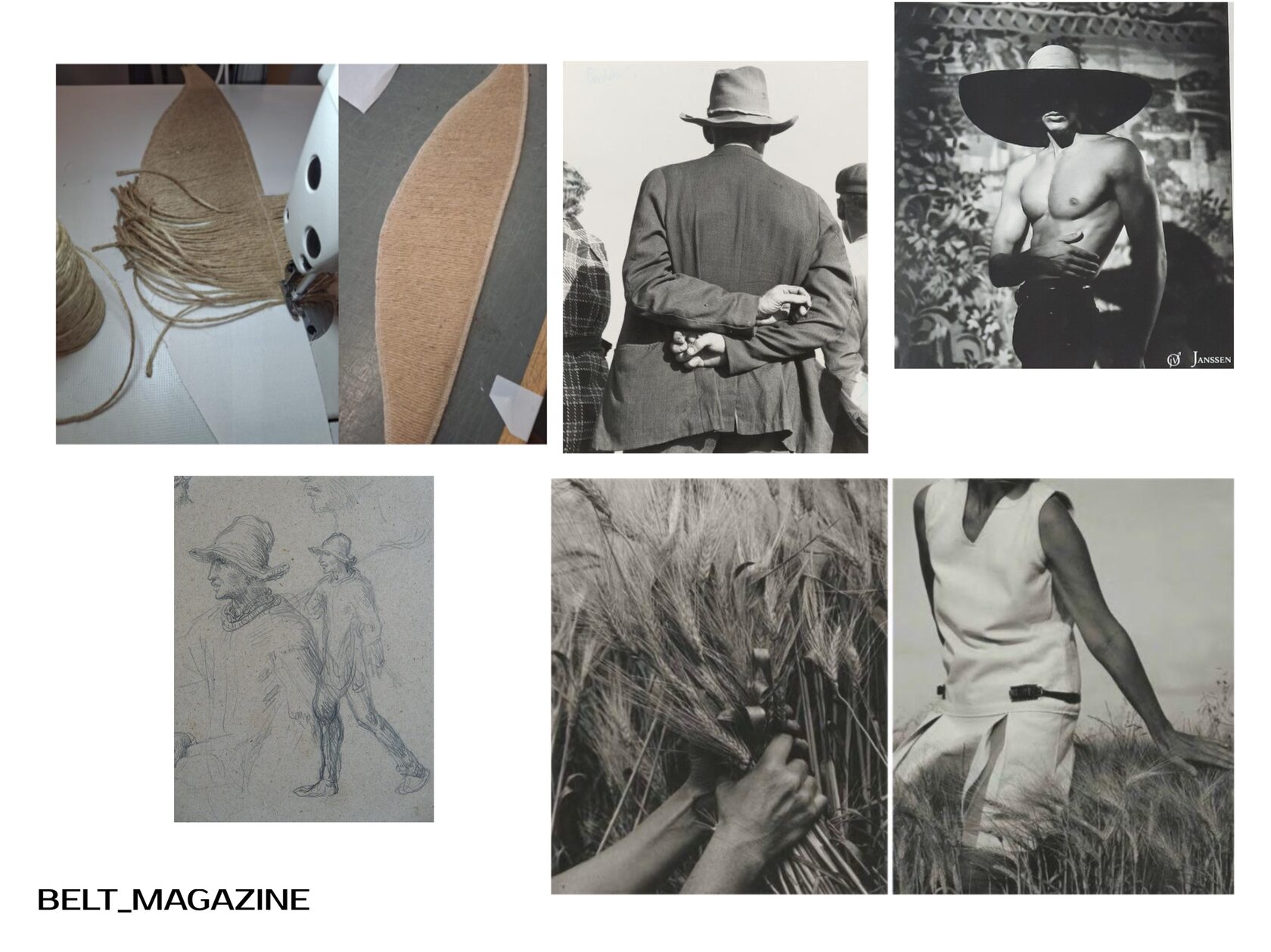
Look: "The Schoolboy's Escape"
Let's examine another look from the "SATOR" collection. Lucas named it "The Schoolboy's Escape." It is inspired by Louis Pergaud's novel, "War of the Buttons."
Let's examine another look from the "SATOR" collection. Lucas named it "The Schoolboy's Escape." It is inspired by Louis Pergaud's novel, "War of the Buttons."

Photo: Rebecca Maynes
"The book tells the story of children from neighboring rural villages who, after school, engage in playful 'wars,' fighting with wooden sticks and collecting buttons torn from each other's shirts as trophies. It reflects a time when school life in the countryside was intertwined with agricultural labor, and clothing had to serve both purposes. This outfit is a reimagining of the traditional rural school uniform, but with the addition of sensuality and poetic softness." Lucas explained.
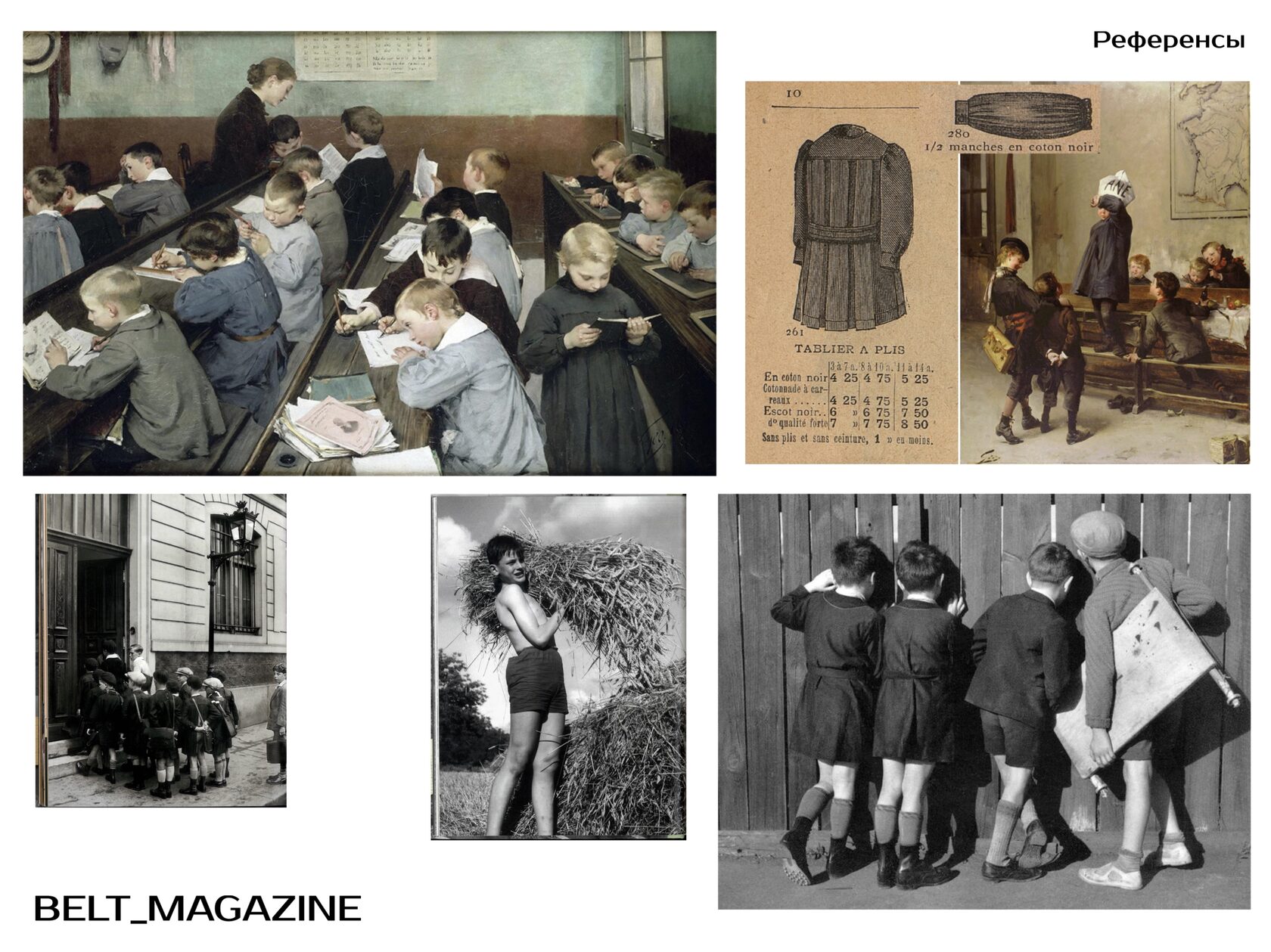
The denim jacket reinterprets the traditional work smock, which also served as a school uniform in rural areas. Constructed from a single pattern piece, like the shirt in the wheat skirt look, it drapes like a cape and fastens with two front buttons. The wide, open collar is a reference to summer shirts. Underneath the jacket, the model wears a crocheted jute yarn top, reminiscent of vintage underwear worn by rural youth. On the wool shorts, a deconstructed shirt is visible, sewn onto the waistband, creating a deliberately disheveled, half-undressed effect. At the base of the button placket, a single stalk of wheat is sewn in, embroidered with white threads.

"'The pattern-making for this look was the most challenging in the entire collection. Constructing the smock as a single, continuous form required in-depth research and technical precision to ensure freedom of movement and maintain volume. The shirt-shorts hybrid was also technically complex. Ensuring functionality and a smooth construction while layering two contrasting fabrics with different textures and densities required a high level of control to maintain a clean, structured finish,'" Lucas shares.
We believe that Lucas's collection is incredibly talented and deserves special attention, and we hope that in the future he will be able to conquer global runways. He has come a long way, and, of course, we can't help but ask him what he would like to say and advise young designers:
"One piece of advice that truly helped me during my final collection is to embrace working in 3D. Don’t rely solely on sketches; our imagination has limits on paper, but when you start draping and experimenting directly on the form, unexpected ideas begin to emerge. There’s a whole world of shapes, structures, and silhouettes that can only be discovered through hands-on exploration. Get off the desk and into the studio, that’s where the real magic happens."
Lucas Louis Lidy
Author: Yulia Lesina
We believe that Lucas's collection is incredibly talented and deserves special attention, and we hope that in the future he will be able to conquer global runways. He has come a long way, and, of course, we can't help but ask him what he would like to say and advise young designers:
"One piece of advice that truly helped me during my final collection is to embrace working in 3D. Don’t rely solely on sketches; our imagination has limits on paper, but when you start draping and experimenting directly on the form, unexpected ideas begin to emerge. There’s a whole world of shapes, structures, and silhouettes that can only be discovered through hands-on exploration. Get off the desk and into the studio, that’s where the real magic happens."
Lucas Louis Lidy
Author: Yulia Lesina
